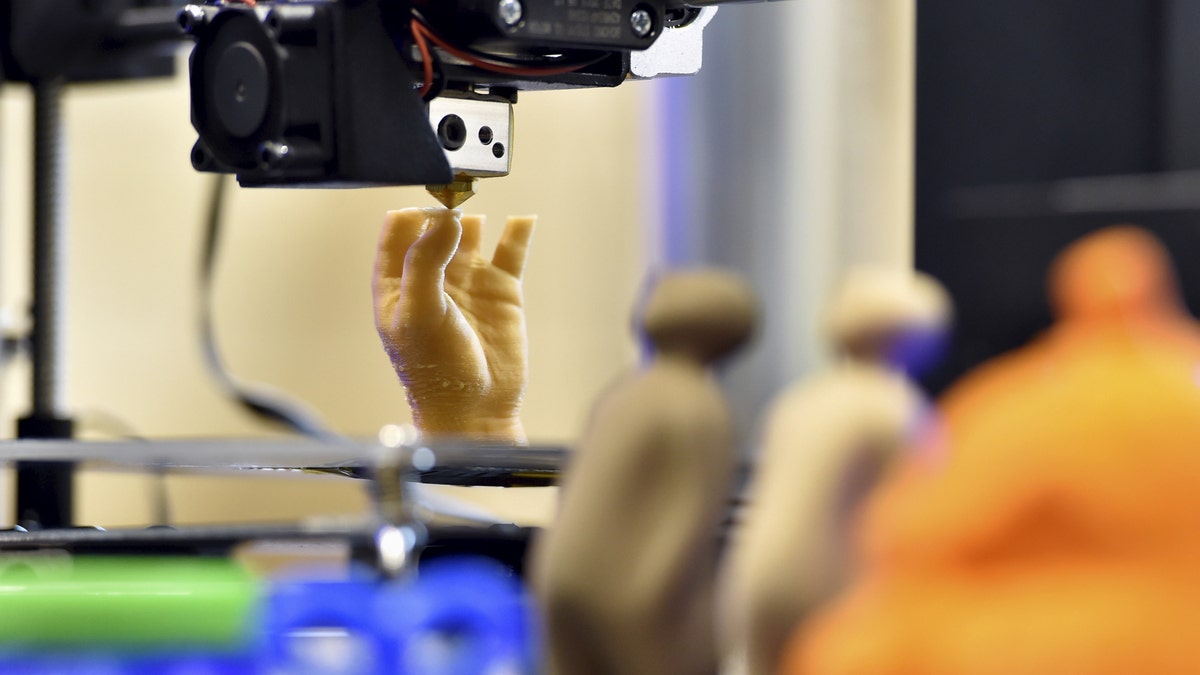
File photo - 3D printed objects are displayed as an artificial hand is being printed during a 3D printing show in Brussels, Belgium, Oct. 18, 2015. (REUTERS/Eric Vidal)
3D printers don't just produce whatever you choose to make — they also let off fumes. According to a new study from researchers in Paris and the United States, those vapors may be more dangerous than you previously thought.
The study, printed in the Jan. 7 issue of Environmental Science & Technology, suggests that plastics such as nylon, ABS and polycarbonate used in 3D printing create particles of potentially dangerous materials like styrene, which the International Agency for Research on Cancer classifies as a possible human carcinogen.
MORE: 8 Awesome 3D Printing Trends to Watch
Not all plastics were found to be as dangerous, though. Those printing with PLA plastic are subject to lactide, which the scientists suggest isn't toxic. There is also no data on whether the design of a printer or characteristics of particular printers have any impact on fumes and particles.
The study was conducted by researchers from the Illinois Institute of Technology, University of Texas at Austin and Ecole des Ingénieurs de la Ville de Paris.
In the Discussion section of the study, the researchers call for more studies, while also urging manufacturers to develop new, low-emitting filaments. "Until then, we continue to suggest that caution should be used when operating many printer and filament combinations in enclosed or poorly ventilated spaces or without the aid of gas and particle filtration systems," the researchers wrote. The study also suggests using 3D printers only in well-ventilated areas to reduce your chances of inhaling potentially dangerous particles.








































